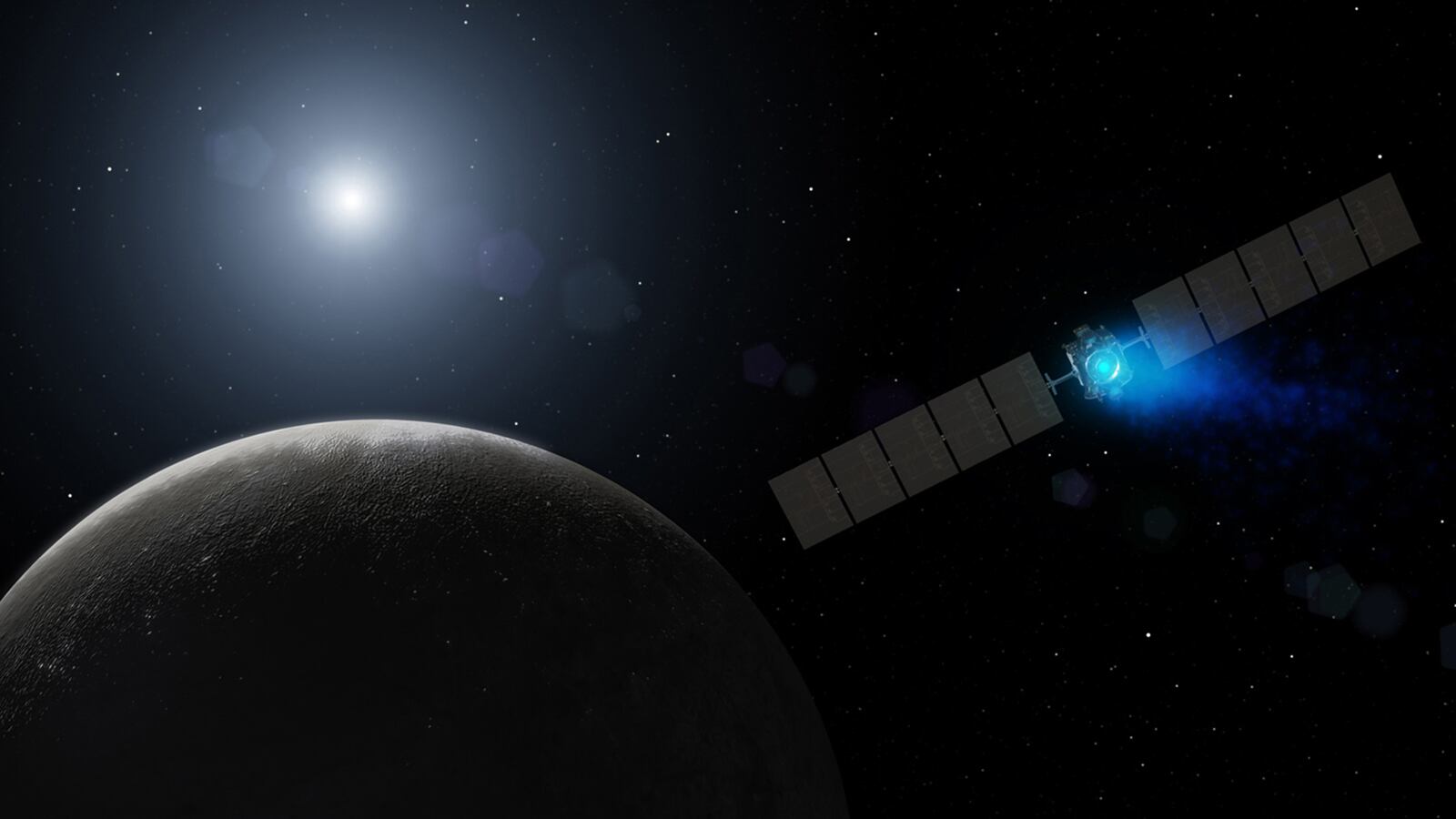When I was young, I obsessively read through a National Geographic science book called Our Universe, a good overview of current astronomy and especially the Solar System. Voyager 2 was cutting edge at the time, which gives you a hint of when this was. One chapter was devoted to asteroids, the small rocky bodies scattered throughout the inner Solar System and especially the region between Mars and Jupiter. At that time, we didn’t have clear photos of any of them, so the book had paintings of Ceres, Vesta, Pallas, and several asteroids. My mental image of Ceres for more than 30 years has been that artist’s impression: a perfectly spherical, heavily cratered object, colored a light gray.
I mention this because for the first time in history, we now have real photos of Ceres, thanks to NASA’s Dawn spacecraft. Dawn entered orbit around Ceres today, providing us with our first close-up views during its approach. While its scientific mission has just begun, Dawn already has shown us that Ceres is an interesting world, different in many striking ways from Vesta—which Dawn visited previously—and other asteroids. (The New Horizons probe will arrive at Pluto later this year, making 2015 a banner year for exploring new worlds.)
The probe has made a fascinating discovery already: Dawn’s cameras picked up two very bright spots inside a crater on the asteroid surface. (The Hubble space telescope saw a hint of the spots previously, but not clearly enough to guess anything about them.) These spots are reflective enough to show up even on the dark side of the asteroid, meaning they are probably some sort of ice, possibly exposed by whatever impact created the crater in the first place. As Emily Lakdawalla of the Planetary Society points out, though, Ceres is dark enough in color that these spots look whiter in contrast to the rest of the surface.
Speaking of ice: we know Ceres is at least 25 percent water, in contrast with Vesta, which has relatively little. Learning why these two asteroids are so different is a major part of Dawn’s mission. In many ways, Ceres seems to resemble a moon of Jupiter or Saturn, while Vesta is very much like Earth and the other inner planets.

Though Giuseppe Piazzi discovered Ceres on New Year’s Day in 1801, the asteroid is simply too small for even our biggest telescopes to see details. Though it’s big enough for the International Astronomical Union to name it one of five dwarf planets (along with Pluto, Eris, Makemake, and Haumea), Ceres is only 975 kilometers (606 miles) across at its widest, less than one-sixth of Earth’s diameter. And small as it is, all the other asteroids put together are only about twice as massive.
Ceres is also much rounder than other asteroids; Vesta looks like a squashed dinner roll, for instance. However, Ceres is still about 70 kilometers (43 miles) wider at the equator than it is at the poles. That’s probably because one day on the asteroid lasts only nine hours: spinning makes objects bulgier around the middle and flatter near the poles.
Back in the days when I had only that artist’s view of Ceres to go from, I thought asteroids were boring. I was wrong: asteroids are fascinating, and not just because they’re the debris from the early days of the Solar System when the planets first formed. Each is a world in its own right just as the planets are, with its own history and character.






